Central Medallion Designs
Artfully composed of small pieces, the central medallion format dominated early 19th century quilt designs. The central star, called Lone Star or Bethlehem Star, was one of the most spectacular and popular patterns. Many fabrics found in period quilts like this one are of English origin, since American industry could not yet supply all of the country's demand for cotton fabrics.
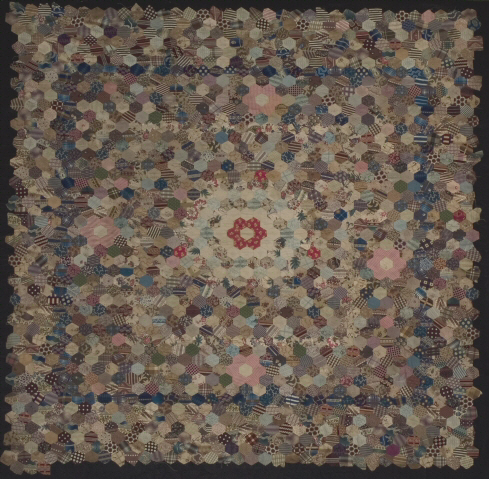
English Mosaic Top, c. 1820
Maker: Susan Eusden
Museum Collection 2208
Susan Eusden, born in England about 1838, probably brought her quilt top with her when she and her new husband immigrated in 1869. They homesteaded on Lost Creek in Platte County, Nebraska, where she died in 1910. Passed to her daughter Jane, the top came to the Museum from Susan's greatgranddaughters.
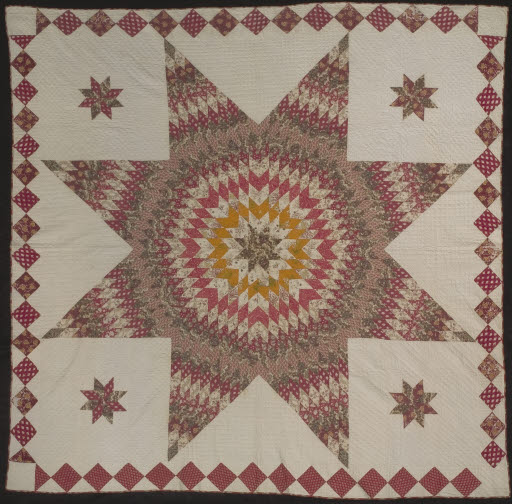
Lone Star, c. 1820
Maker: Minerva Hellen Wilson
Minerva was only 32 years old when she died in 1839 leaving 4 children. This quilt, a legacy of design and elegant needlework, was handed to her eldest son and passed through two more generations before its donation to the Museum. Minerva may have developed such sophisticated design and sewing skills because both her father and her husband were hat makers. The unexpected chrome yellow in the center accents the various shades of red and is testimony to Minerva's eye for color and texture.
View Online Catalog Record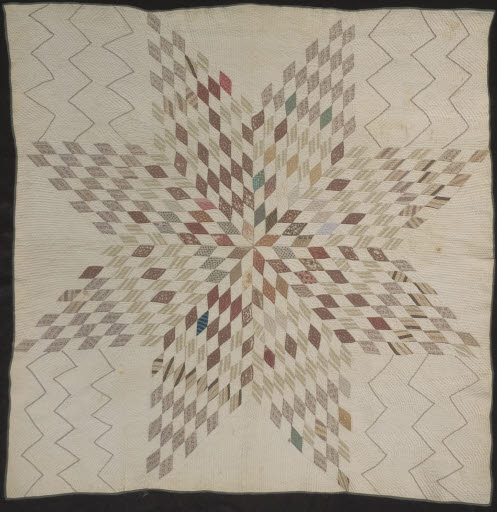
Lone Star, c. 1860
Maker: Unknown
This Lone Star quilt's donor stated that it "was made by one of the first three white women to come to Stevens County." That county was formed in 1864, and the fabrics match the 1860s era. The first Stevens County census in 1870 counted 733 people, and very few of them were white women.
View Online Catalog Record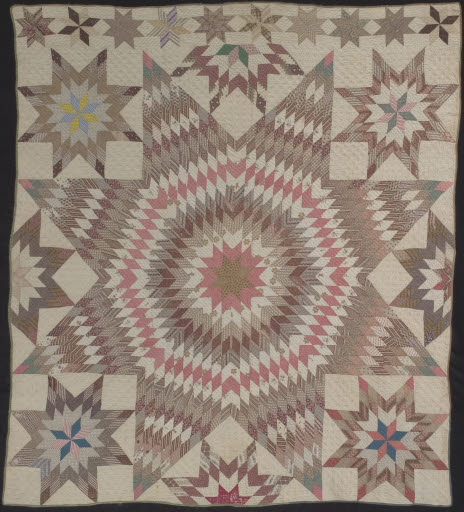
Lone Star, c. 1860–1870
Maker: Unknown
Imagine creating a Lone Star quilt in the mid-1800s. The 60-degree diamond shape may have been borrowed from a friend or carefully drawn on precious recycled letters or a rare piece of cardboard. Likely, the pattern changed shape with repeated tracings, giving irregularity to the finished quilt. After the day's chores were finished, women hand-pieced quilts in their laps by kerosene lamplight.
View Online Catalog Record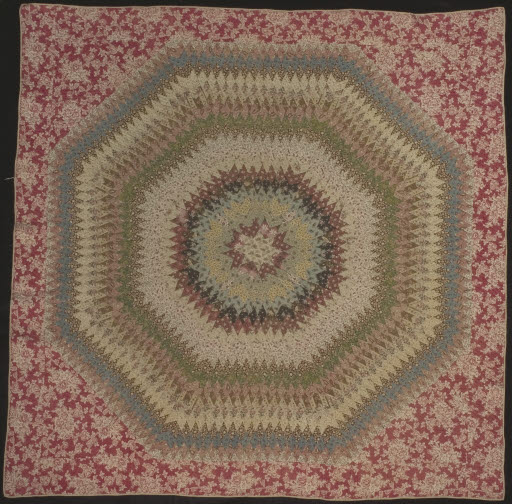
Sunburst, c. 1830
Maker: Unknown
Made by her grandmother and aunts in the New York area, Helen Dittmer's inherited radiating star quilt was a prize winner at many fairs. Helen carried the quilt to the Northwest, arriving in 1959 in Spokane where her husband William managed Kaiser Aluminum & Chemical Corp. After his death she moved to Minnesota where she died at the age of 98.
View Online Catalog Record
Sunflower, c. 1920
Maker: Kate Brook McCrea
Kate McCrea fashioned her Sunflowers design exactly like the pattern she found in Marie Webster's 1915 book, Quilts: Their Story and How to Make Them. Kate's husband was a senior partner at the insurance and loan firm, McCrea and Merryweather, which afforded the family a fine home at 6th and Monroe (still standing). Kate's sister, Mary, lived for a time in a rented house next door and the two almost certainly quilted together. Several of their quilts were donated to the Museum.
View Online Catalog Record